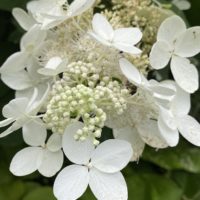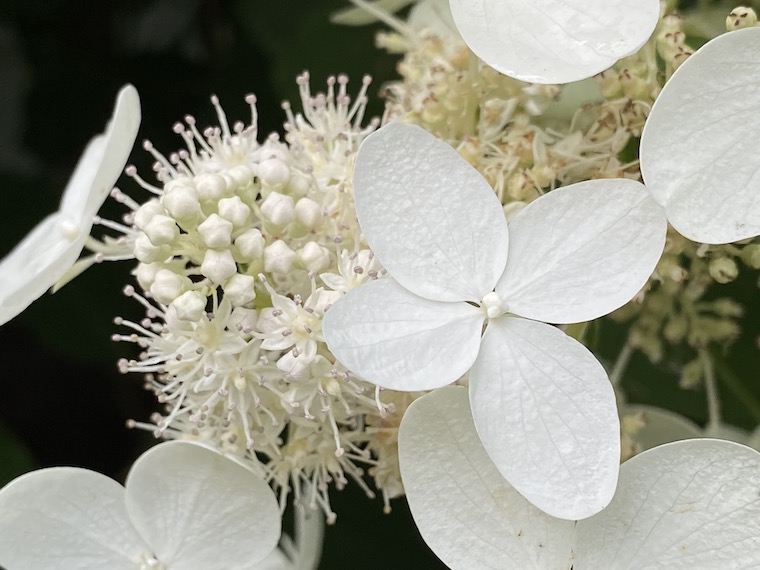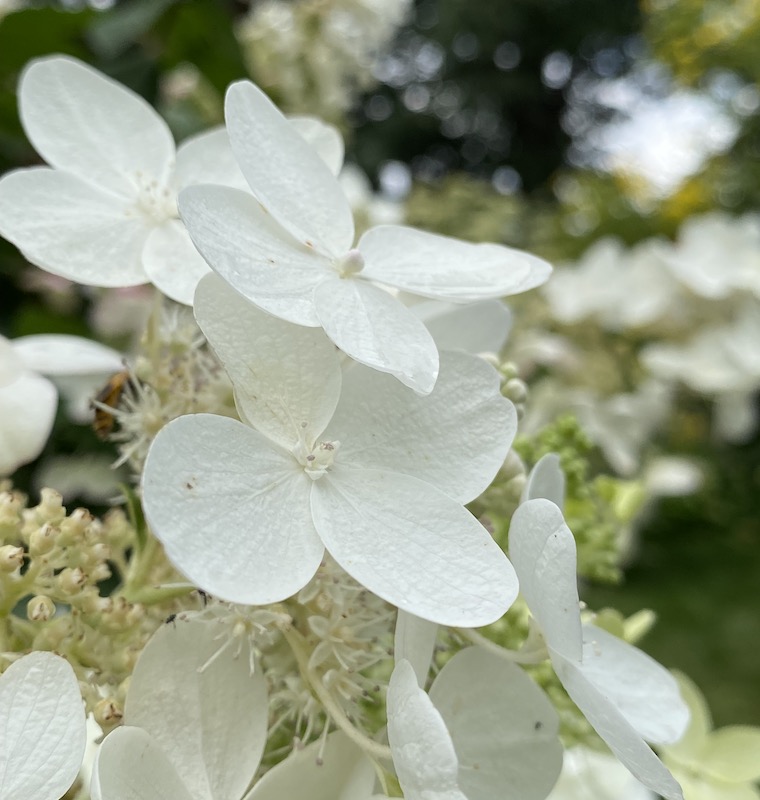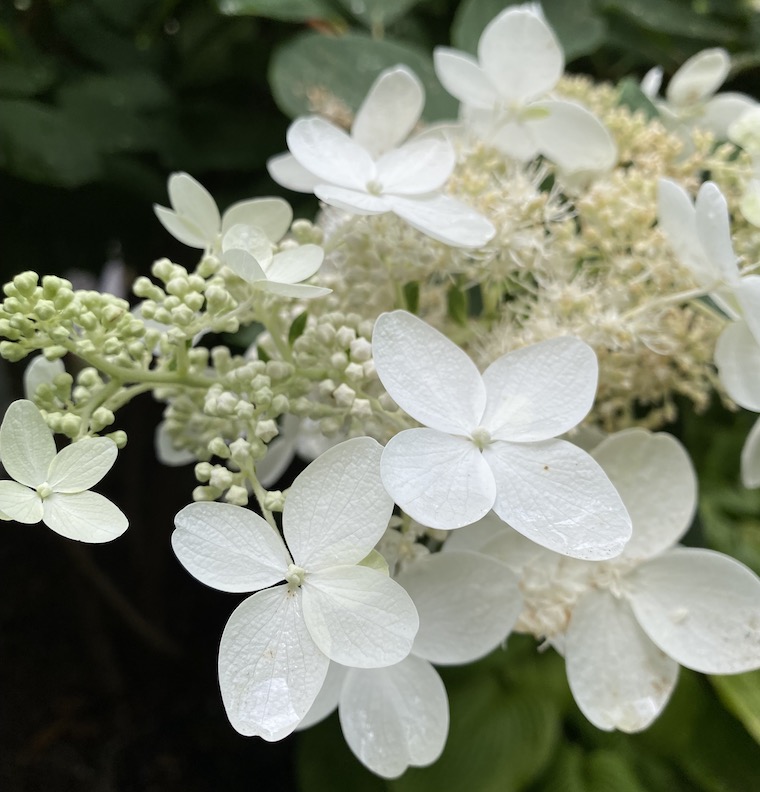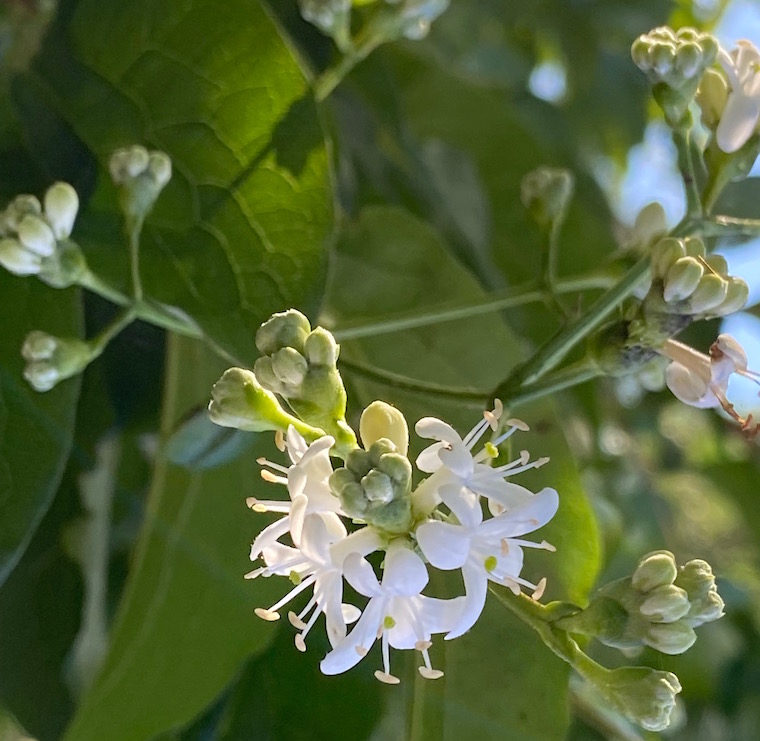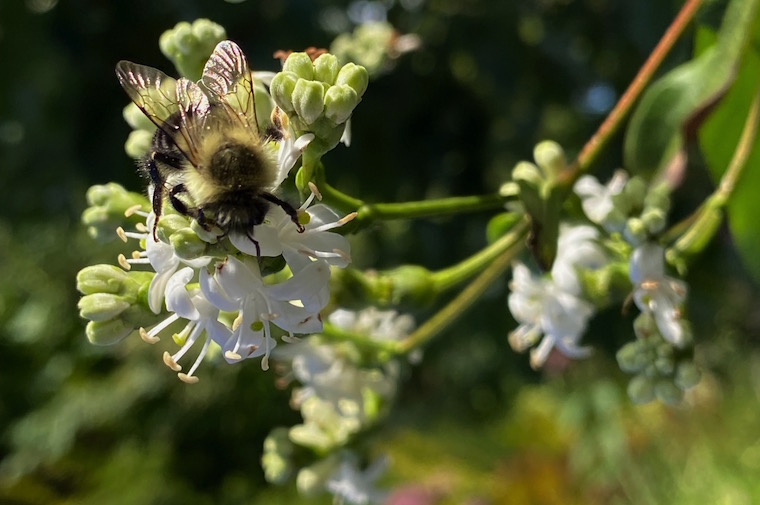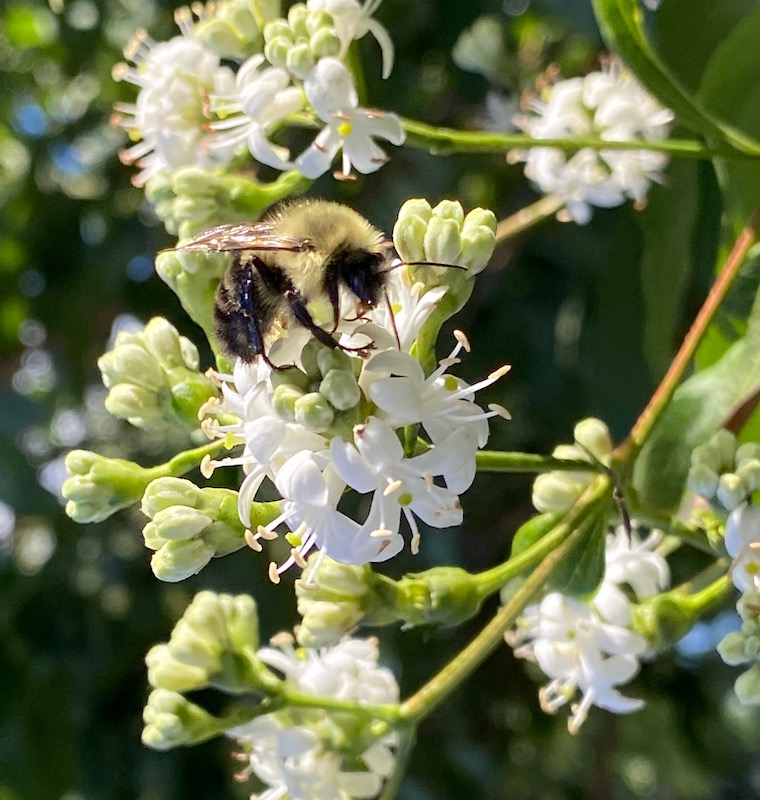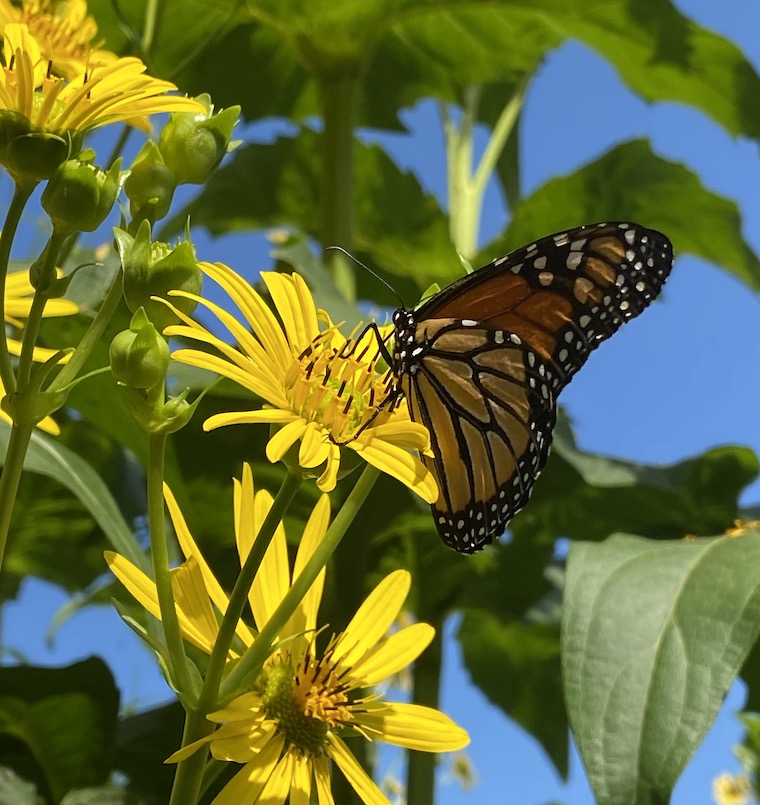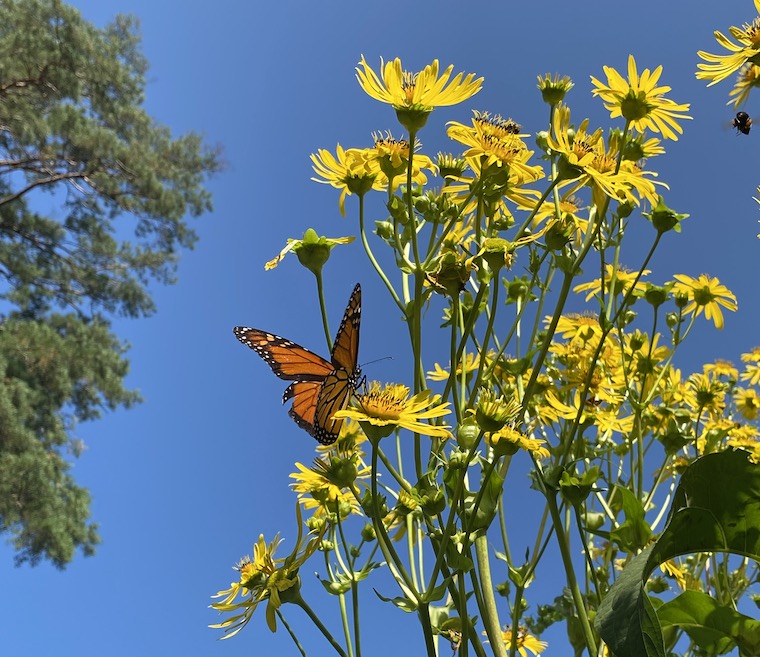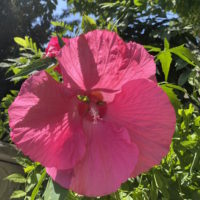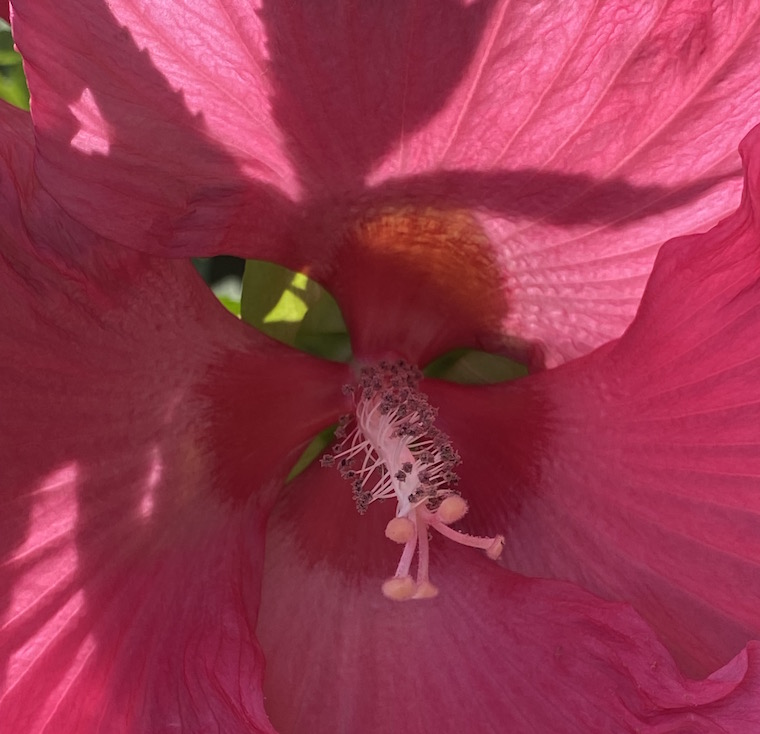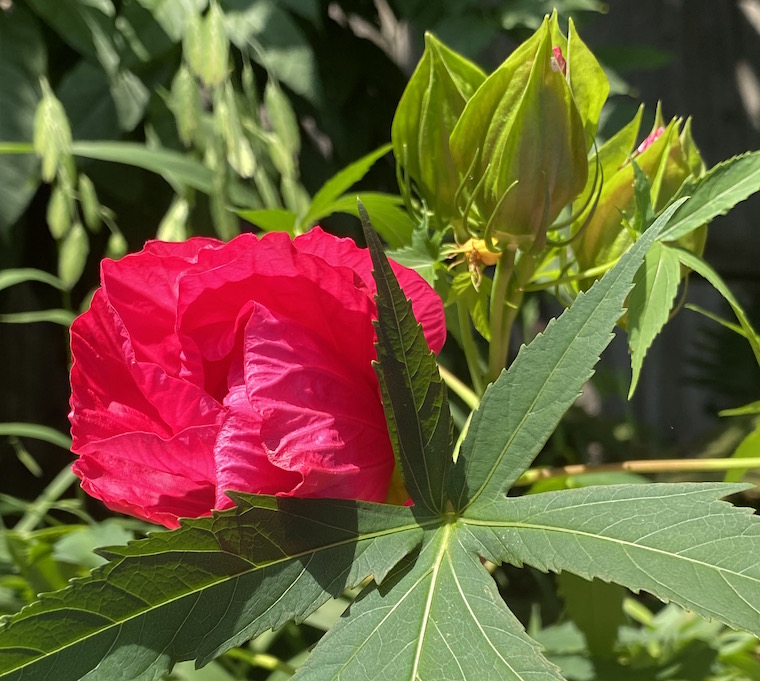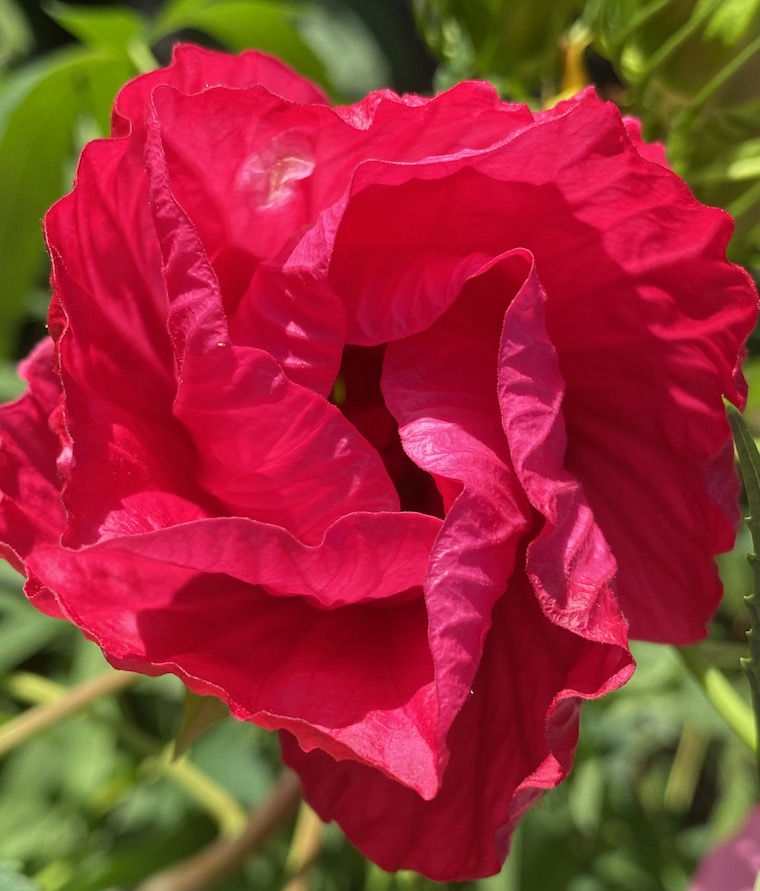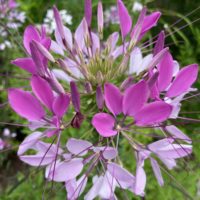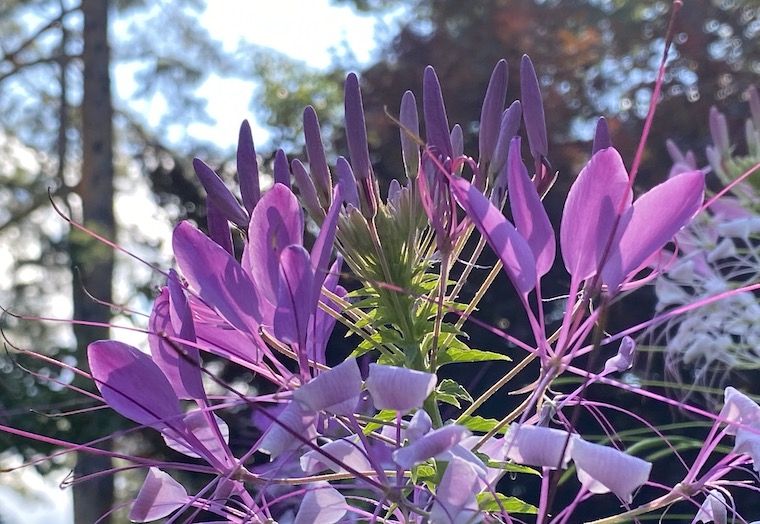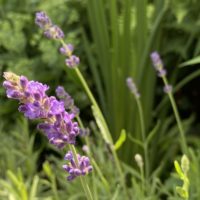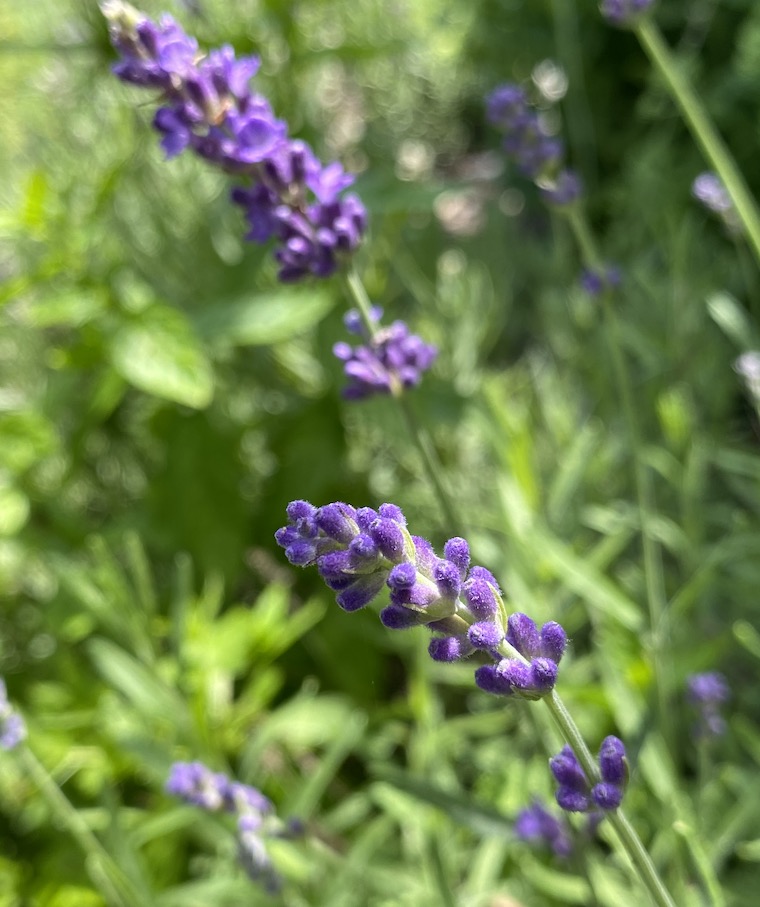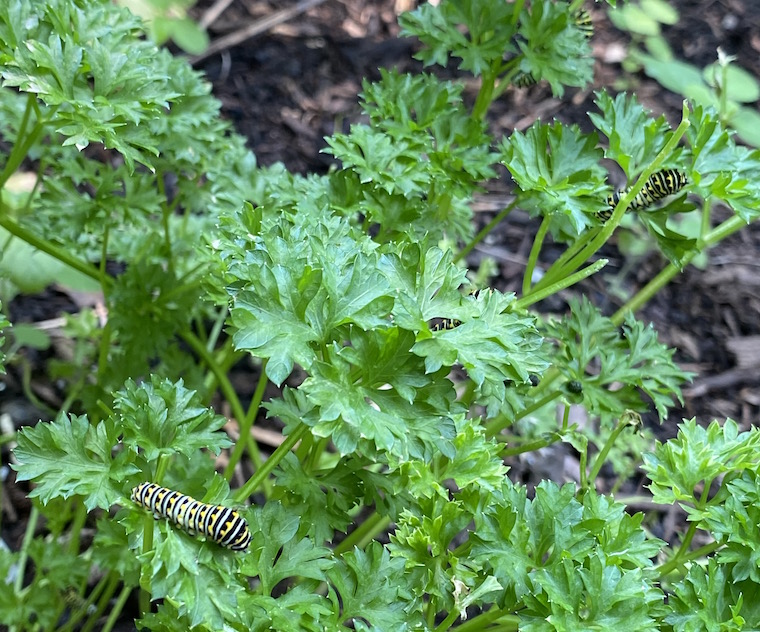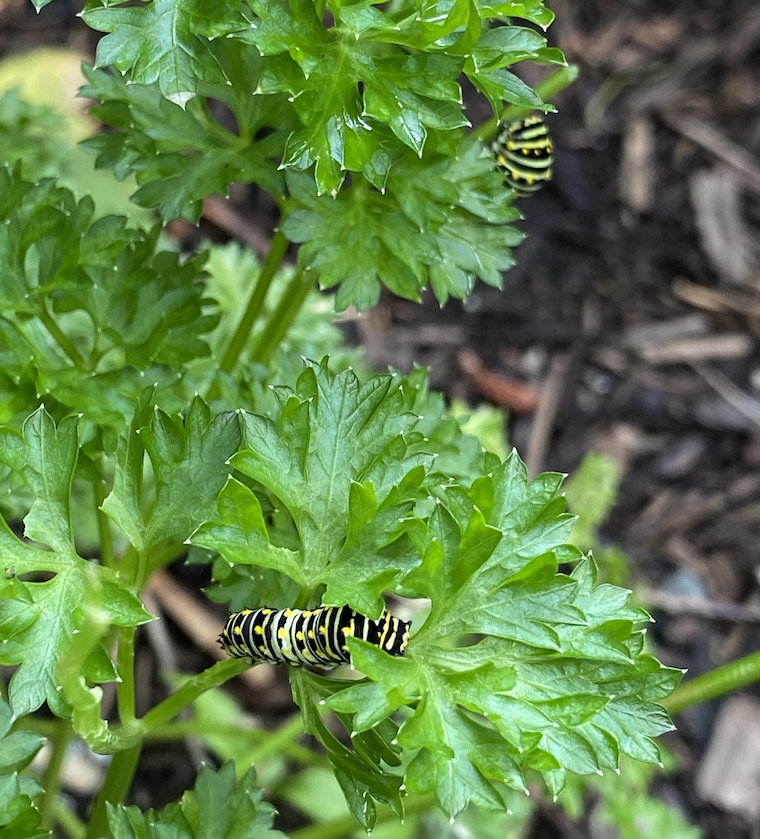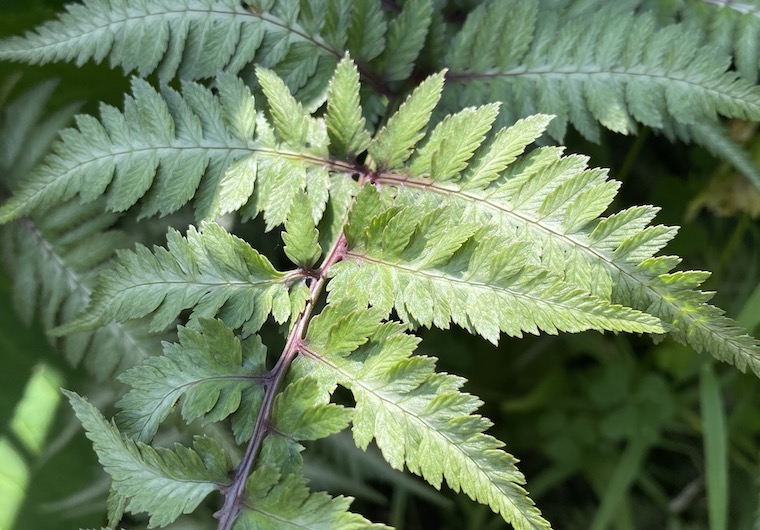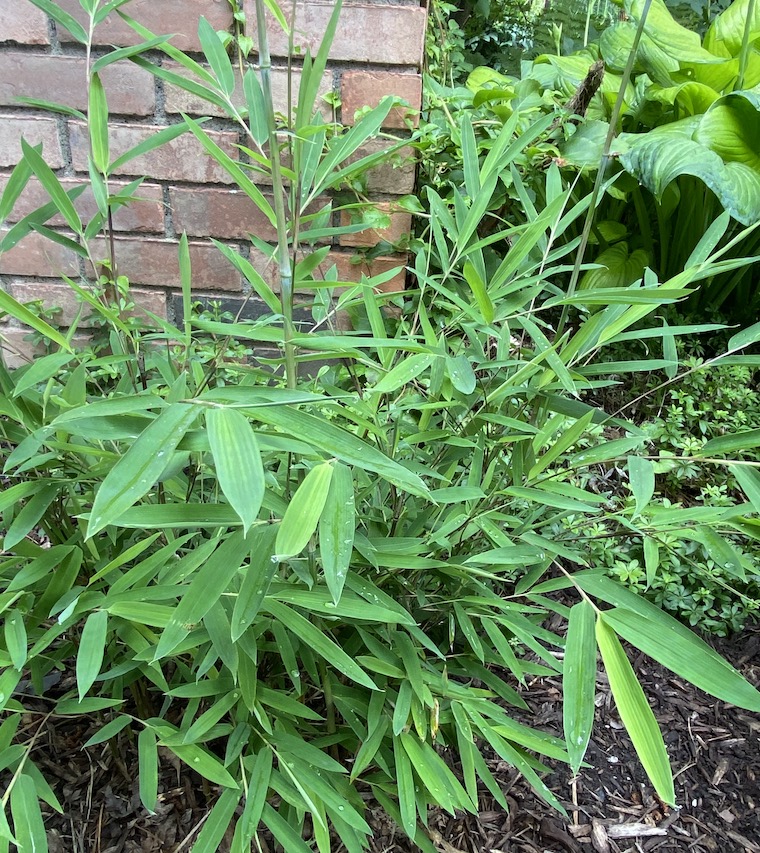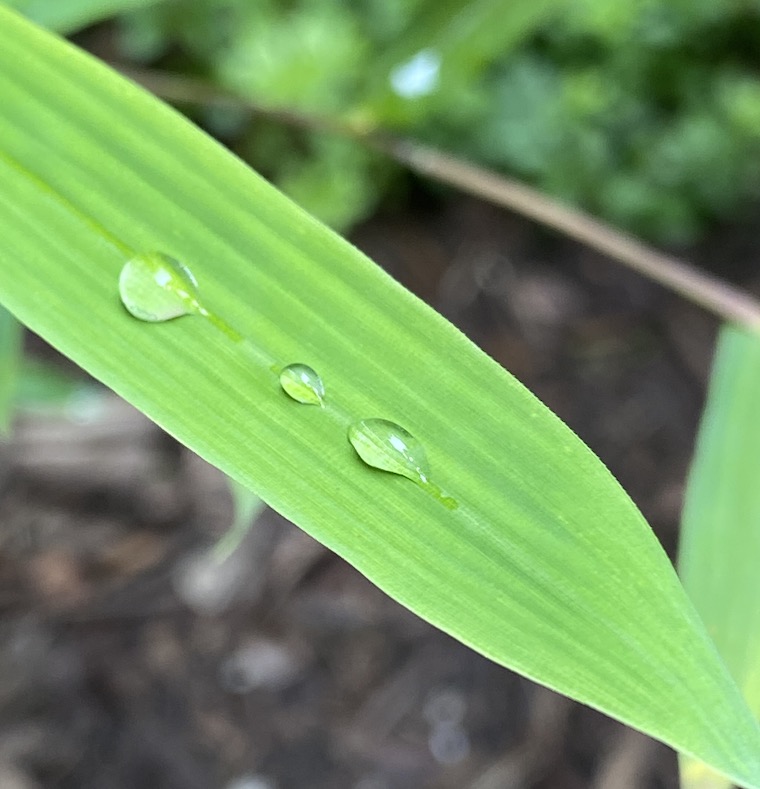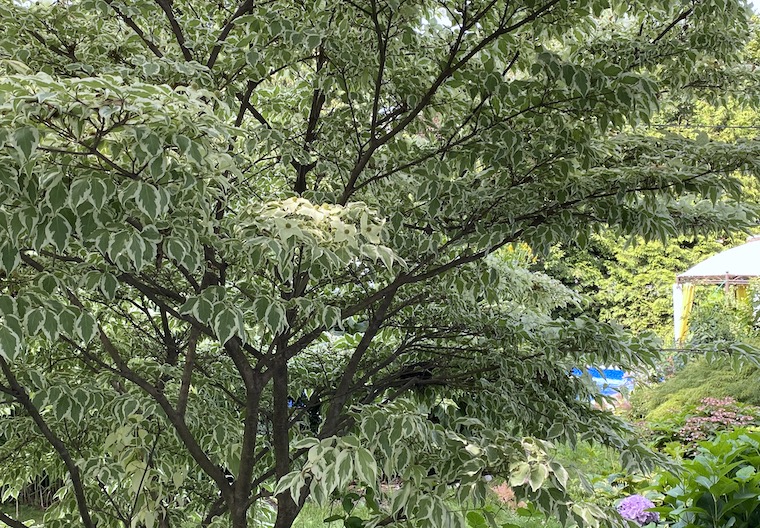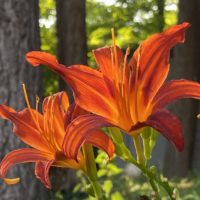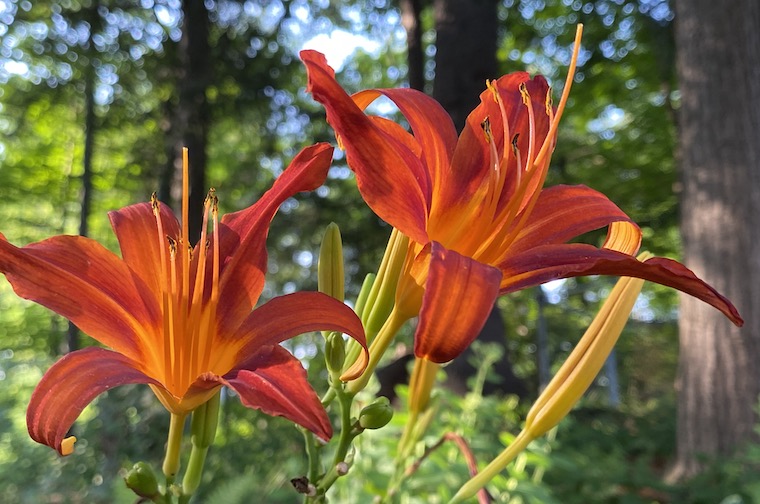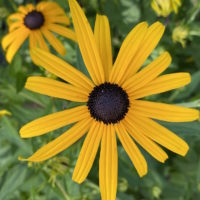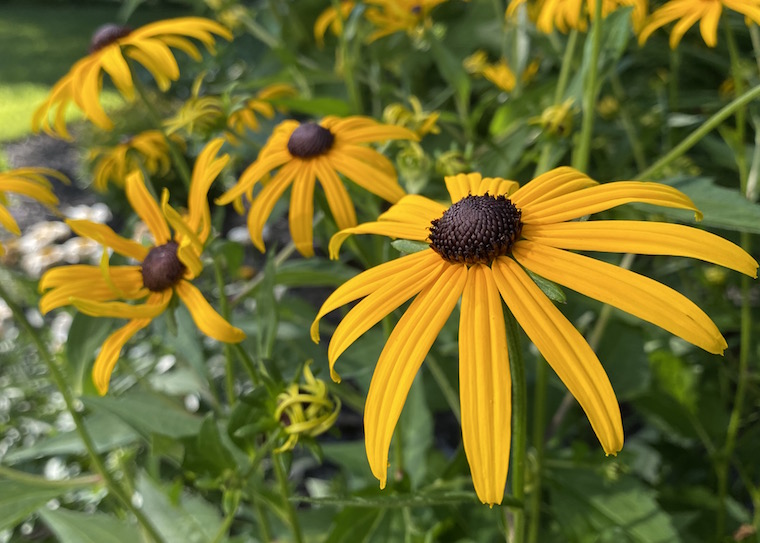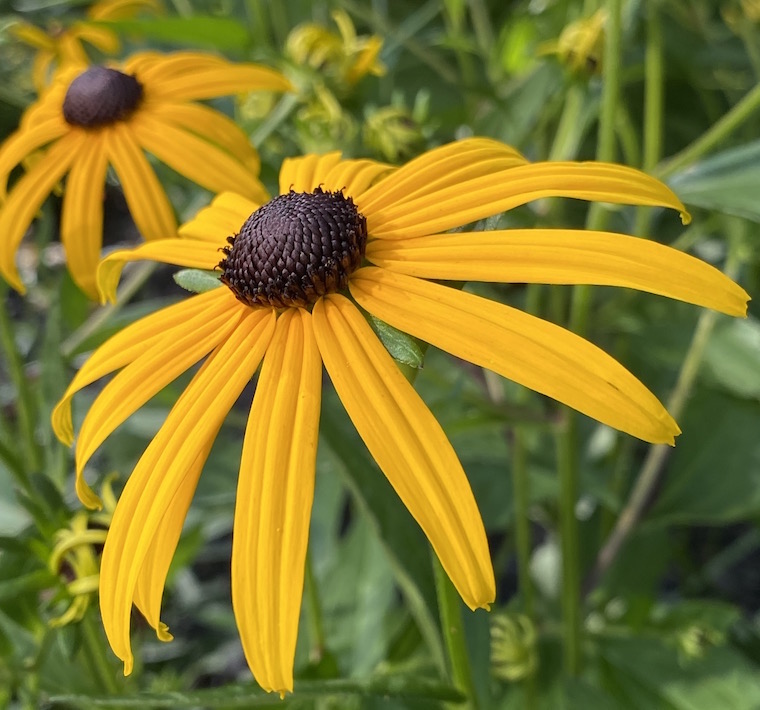Bright and intense jolts of color coming into the garden at this time of the year are mainly accomplished through the somewhat artificial practice of introducing a pot of obnoxious chrysanthemums into the landscape – perfectly produced mounds of temporary blooms that always look forced and rigid no matter how they are used. Better to have a plant like Vernonia fasciculata – commonly known as Ironweed – put on a show in a more natural and rustic fashion.
I found this plant two falls ago, on a big sale, and popped it in rather late in the season as an afterthought, thinking if it survived that would be an unlikely miracle. Of course I forgot about it until eery summer when it emerged and started sending up tall stalks of leaves. Hoping to force it to branch out, I cut those back the first spring they appeared, resulting in a shorter but more branched form. This year I let them go without any pruning, to see how high they would fly – they are now towering over me at well over six feet in height, and these blooms have just begun.
The plant likes moist soil in full sun, where it will achieve its stately size, and is reportedly host to the American Painted Lady butterfly. It’s a little coarse in leaves and form, but the color, and the time of bloom, are enough to merit its place in our garden.




